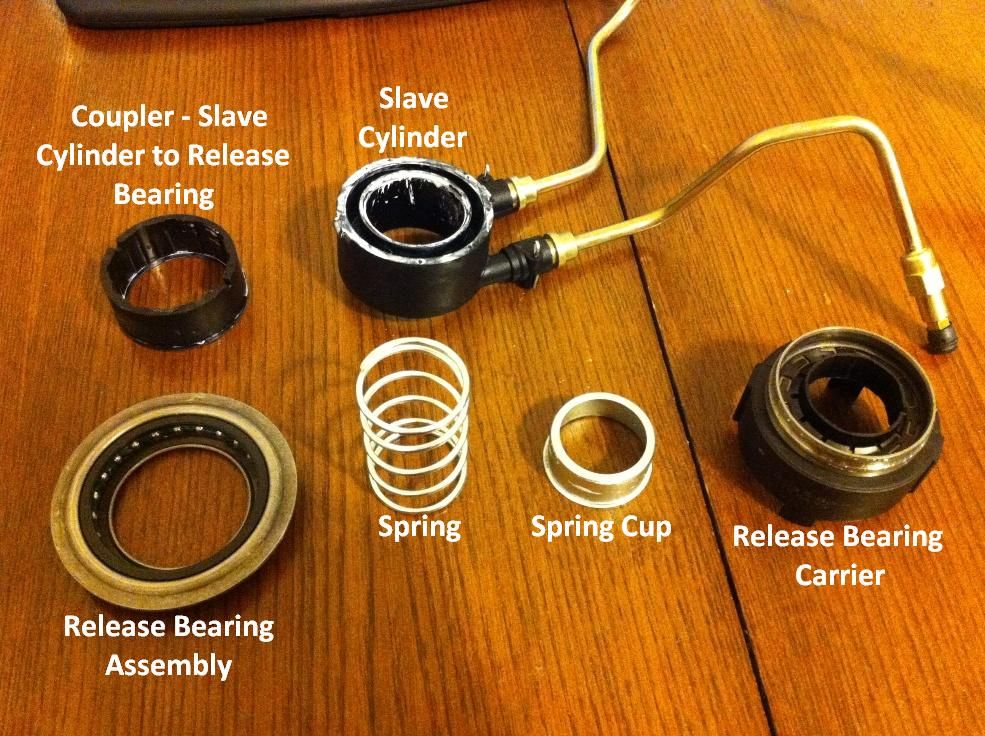As we have so many issues with the Slave Cylinders in our cars, I figured it'd be useful for members to know exact what's inside one, and how they usually fail.
The Slave Cylinder as fitted to the 75/ZT also incorporates the Release Bearing, and is fitted within the bellhousing between the engine and gearbox. While this is convenient for manufacturing the vehicle and easy to change while swapping a clutch, unfortunately they are prone to failure on our cars and as such the gearbox needs to be removed to replace it.
Here's a new Borg & Beck Slave split down into its component parts:

Slave Cylinder - This houses the seal which exerts pressure on the Coupler to actuate the clutch. The Cylinder is made of Glass Reinforced Plastic, and has polished internal surfaces to minimise wear on the seal.
Coupler - This transfers the movement of the seal to the Release Bearing. The slightly larger end of the Coupler faces the seal, and the two 'teeth' face the Release Bearing Carrier.
Spring cup - This component sits within the Slave Cylinder, and provides a firm base for the Spring to exert upon.
Spring - The Spring holds the Release Bearing against the 'fingers' of the clutch spring at all times for smooth clutch take-up.
Release Bearing Carrier - The Carrier is pushed from the Slave Cylinder via the Coupler, and also holds the bearing race the Release Bearing mates against.
The Carrier takes the full 'weight' of the clutch actuation, and some cheaper items suffer with the bearing race wearing away prematurely. When this happens the bearing will seize, tearing the two slider tabs and allowing the whole Carrier assembly to rotate with the clutch. Unfortunately this quickly melts the Coupler, causing total failure.
Release Bearing - This houses the ball bearings which mate with the bearing race attached to the Carrier. The tolerances at play are very small, meaning poor-quality bearings or worn bearings will quickly lead to bearing failure allowing the rotating Release Bearing to contact the Carrier directly. This usually results in the 'melted' assemblies seen on many member's cars, as the metal surfaces generate heat as they rub together.